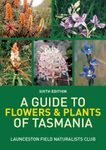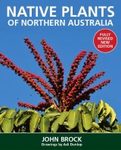Flora / Fauna Identification Key
Edited By: Patrick M McCarthy
213 pages, Col photos, b/w line illus, maps
![Flora of Australia, Volume 12: Mimosaceae (excluding Acacia), Caesalpiniaceae Flora of Australia, Volume 12: Mimosaceae (excluding Acacia), Caesalpiniaceae]()
Click to have a closer look
About this book
Customer reviews
Related titles
About this book
Volume 12 of the Flora of Australia comprises 1 complete family - Caesalpiniaceae, together with all native and naturalised Mimosaceae apart from Acacia. The volume provides descriptions of 38 genera, 153 species and 16 'form taxa' in these families, and includes contributions from 7 authors, 3 illustrators and 11 photographers.
Mimosaceae is treated as a family by Cronquist but as a subfamily of Leguminosae by many specialists. It is represented in Australia by 17 genera, of which 16 (containing 43 species) are dealt with in this volume. Most of the species documented here occur as trees, shrubs or lianes in subtropical and tropical Australia. Acacia, is treated in Volumes 11A and 11B, comprises more than 1000 taxa, and is the most speciose genus in the Australian flora.
Twenty-two genera of Caesalpiniaceae (of which three are endemic and six naturalised) and 126 species are present in Australia. Most occur in tropical and subtropical regions; however, Labichea, Petalostylis and Senna have radiated in the more arid parts of the continent. Many of the species in this volume are of horticultural importance.
In Senna, taxonomic distinctions are blurred by the occurrence of polyploidy, hybridisation and apomixis, and this has led to the recognition of 'form taxa' in this volume. Although these are informal in a nomenclatural sense, each reflects a suite of morphotypes occurring in complex populations. This approach has been adapted to provide the user of this volume with a working nomenclature for recognisable entities, although it must be emphasised that these may not have genetic homogeneity or morphological continuity between populations.
This volume covers 2 families, 38 genera, 153 species and 16 'form taxa'. 8 new taxa are described in Chamaecrista, as well as many new combinations and lectotypifications.
Customer Reviews
Flora / Fauna Identification Key
Edited By: Patrick M McCarthy
213 pages, Col photos, b/w line illus, maps




























